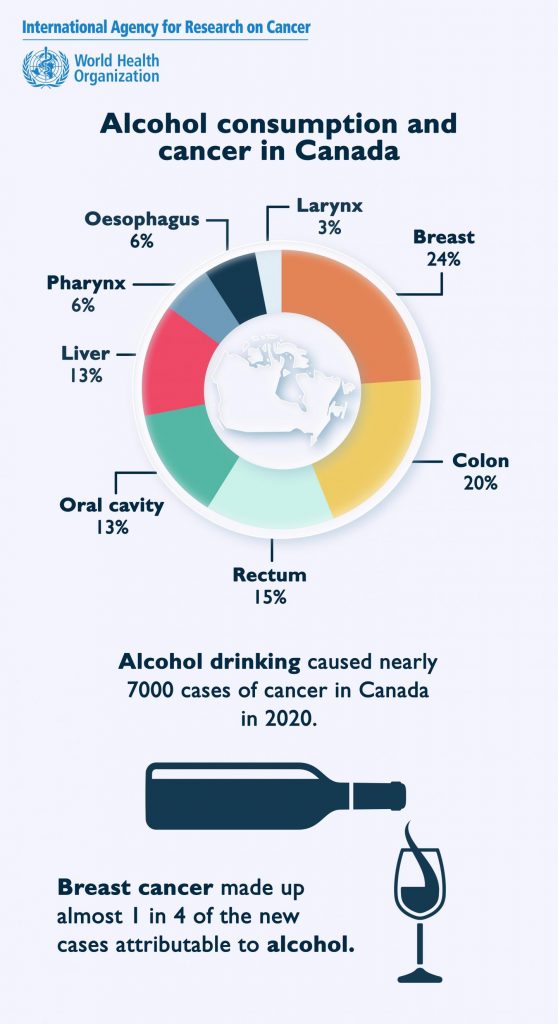
If you enjoy some light or moderate drinking, this is not the news you like. Even light or moderate alcohol consumption can increase you risk of cancer, according to a recent study.
Alcohol Increases Cancer Risk

Alcohol consumption has been linked to cancer, and alcohol is known to cause cancer in numerous ways. However, a recent study by the World Health Organization (WHO) links light to moderate drinking (up to 2 drinks a day) to increased risk of cancer. In 2020, one of seven new cancer cancers and over 100,000 cases worldwide were linked to light/moderate alcohol consumption.
The study was based on data on alcohol exposure from almost all countries of the world, using surveys and sales figures. The researchers used modelling to combine this data with the latest data about cancer risk from alcohol consumption.
The results showed, for example, that alcohol use in Canada was linked to 7,000 new cases of cancer in 2020, including 24 per cent of breast cancer cases, 20 per cent of colon cancers, 15 per cent of rectal cancers, and 13 per cent of oral and liver cancers. About 1 out of 7 new cancer cases were linked to light/moderate alcohol consumption.
The study was published in the July 13, 2021 edition of the journal The Lancet.
Different Ways to Cancer

Alcohol can cause cancer in numerous ways. It can interfere with your body’s ability to repair DNA damage. It can cause liver cirrhosis (scarring) of the liver. It can also disrupts your body’s hormones. All of these can lead to cancer.
This doesn’t mean you shouldn’t stop drinking alcohol. Just know that, for example for a woman, drinking an extra glass of wine per day increases your chance of breast cancer by 6 percent. Having occasional drinks at parties should not be a problem. Like everything in life, it’s a balance of risks and rewards.
SUMMARY: Even moderate drinking can increase your risk of cancer. In 2020, one out of very seven new cancer cases were linked to moderate alcohol consumption.
Journal source: The Lancet
Global burden of cancer in 2020 attributable to alcohol consumption: a population-based study


